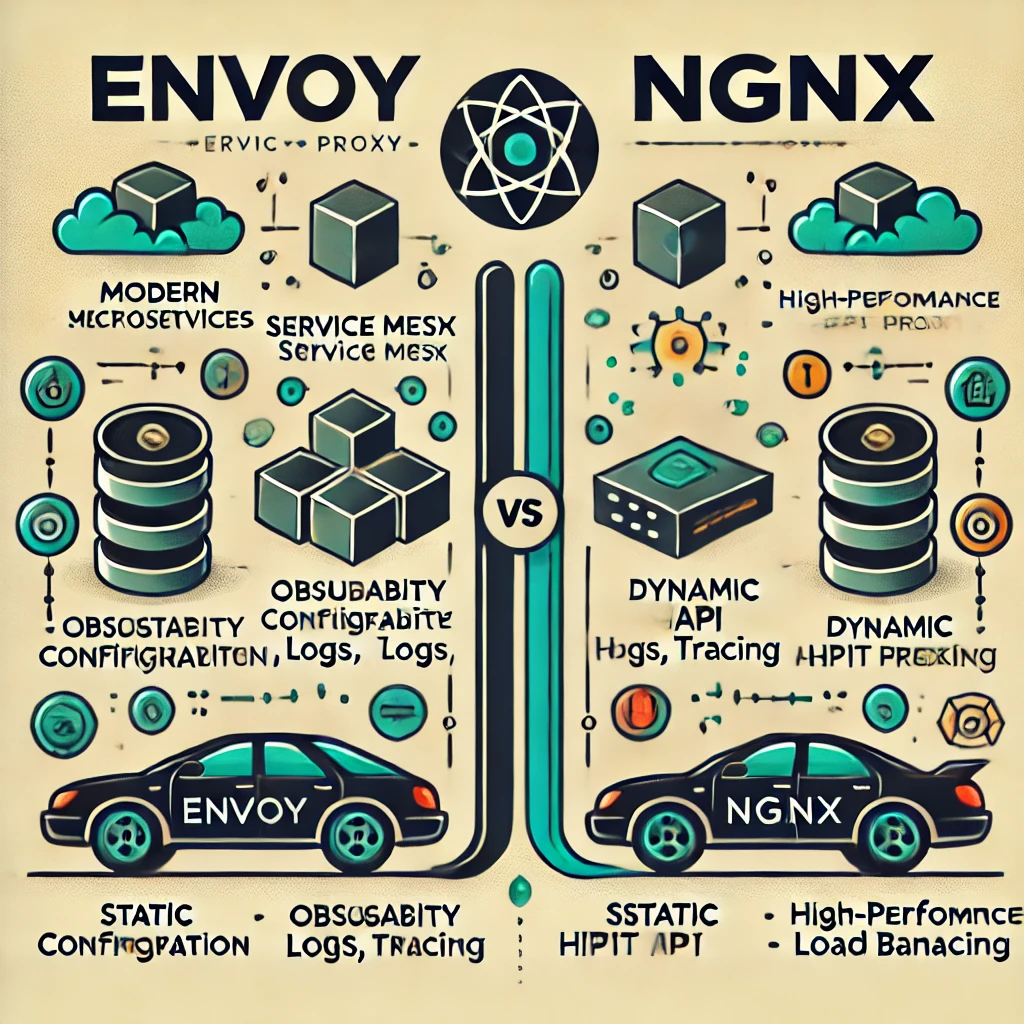Ambassador API Gateway:雲端原生 API 管理方法

在微服務和雲端原生應用的時代,API Gateway 在管理和保護服務之間的通信方面發揮著至關重要的作用。Ambassador API Gateway 作為 Kubernetes 原生解決方案而廣受歡迎,能夠高效處理 API 流量。本文將探討 Ambassador 的關鍵功能、其架構以及與傳統 API Gateway 的比較。
什麼是 API Gateway?
API Gateway 充當微服務的入口,提供以下核心功能: - 身份驗證與授權 – 透過 OAuth、JWT 或 API 金鑰來管理存取控制。 - 流量管理 – 路由、負載平衡和速率限制。 - 安全性 – TLS 終止、請求驗證和防止攻擊。 - 可觀察性 – 記錄、追蹤和監控 API 使用情況。
傳統的 API Gateway(如 Kong、Apigee 和 AWS API Gateway)廣泛應用於單體和混合架構。然而,Kubernetes 原生應用需要更動態、可擴展且適合 DevOps 的解決方案——這正是 Ambassador 發揮作用的地方。
介紹 Ambassador API Gateway
Ambassador 是基於 Envoy 的 API Gateway,專為 Kubernetes 設計。它作為 Ingress 控制器,促進 北-南(外部)流量 管理。
Ambassador 的關鍵功能
- Kubernetes 原生
-
Ambassador 專為 Kubernetes 打造,使用自訂資源定義(CRDs)進行配置,而非傳統的靜態配置文件。
-
基於 Envoy Proxy
-
Ambassador 採用 Envoy Proxy 作為核心,從其先進的網路功能、彈性和可擴展性中受益。
-
去中心化配置
-
與單體 API Gateway 不同,Ambassador 允許微服務團隊獨立配置路由和策略。
-
身份驗證與安全性
- 支援 OAuth2、JWT 驗證和外部身份驗證服務。
-
實施 mTLS(雙向 TLS),確保服務間安全通信。
-
流量控制與速率限制
- 提供先進的 負載平衡、熔斷機制和故障轉移策略。
-
實施 速率限制,防止濫用並確保公平使用。
-
可觀察性與監控
- 無縫整合 Prometheus、Grafana 和 OpenTelemetry 以獲取即時洞察。
- 內建 分佈式追蹤 支援,如 Jaeger 和 Zipkin。
Ambassador API Gateway 的運作方式
1. 部署架構
- Ambassador 以 Kubernetes 部署 運行,通常透過 Kubernetes Service 曝露。
- 它與 Ingress Controllers(如 NGINX 或 Kubernetes API Server)集成,管理外部流量。
- 每個微服務都可以透過 Kubernetes 註解或 CRD 定義自己的路由規則。
2. 流量路由範例
以下是使用 AmbassadorMapping CRD 配置微服務路由的示例:
apiVersion: getambassador.io/v3alpha1
kind: Mapping
metadata:
name: my-service
spec:
prefix: /my-api/
service: my-service.default.svc.cluster.local:8080
timeout_ms: 5000
此配置確保 /my-api/ 的請求被路由到運行於 8080 端口的 my-service。
3. 身份驗證範例
要整合 JWT 身份驗證,可以定義以下配置:
apiVersion: getambassador.io/v3alpha1
kind: AuthService
metadata:
name: jwt-auth
spec:
auth_service: auth-service.default:443
proto: http
allowed_request_headers:
- "Authorization"
此設置確保所有傳入請求都必須包含有效的 JWT 令牌,才會被轉發到微服務。
Ambassador 與傳統 API Gateway 的比較
| 功能 | Ambassador | Kong | AWS API Gateway | Apigee |
|---|---|---|---|---|
| Kubernetes 原生 | ✅ 是 | ⚠️ 部分支援 | ❌ 否 | ❌ 否 |
| Envoy Proxy | ✅ 是 | ❌ 否 | ❌ 否 | ❌ 否 |
| 基於 CRD 的配置 | ✅ 是 | ❌ 否 | ❌ 否 | ❌ 否 |
| 身份驗證 | ✅ 是 | ✅ 是 | ✅ 是 | ✅ 是 |
| 可觀察性 | ✅ Prometheus、Grafana | ✅ Kong Vitals | ✅ CloudWatch | ✅ Stackdriver |
| 無伺服器支援 | ⚠️ 限制 | ✅ 是 | ✅ 是 | ✅ 是 |
| 雲端原生整合 | ✅ 是 | ✅ 是 | ✅ 是 | ✅ 是 |
何時應使用 Ambassador API Gateway?
如果您的應用符合以下條件,Ambassador 會是一個絕佳選擇: ✅ 應用 Kubernetes 原生,並依賴微服務架構。 ✅ 需要 完全聲明式與 GitOps 友好的 API Gateway。 ✅ 需要 高效能 並基於 Envoy Proxy。 ✅ 需要 可擴展性,支援 動態路由和服務發現。
然而,如果您需要 深入的 API 商業化、細粒度分析或伺服器無 API 支援,傳統 Gateway(如 Apigee 或 AWS API Gateway)可能更合適。
結論
Ambassador API Gateway 提供了一個強大的 Kubernetes 原生解決方案,用於管理微服務架構中的 API 流量。憑藉其 Envoy 核心、去中心化配置 和 Kubernetes 的一流支援,它提供了一個可擴展且開發者友好的 API Gateway 替代方案。
如果您正在 Kubernetes 上運行微服務,並尋找一個高效可擴展的 API Gateway,Ambassador 絕對值得考慮!
您是否在 Kubernetes 設置中使用 Ambassador?歡迎在評論中分享您的經驗!




